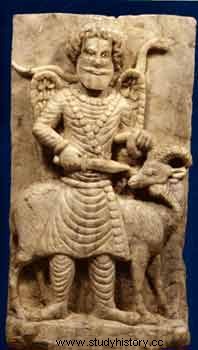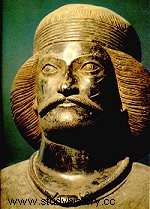-

- parthes
People of horsemen, of Indo-Iranian origin, established between the Caspian and the Aral Sea, in a province of the Seleucid Empire called Parthyene. It seems that they were part of the Parni people, one of the groups making up the relatives of the Scythians. whose meaning in Iranian would be _combatante, cavalier_. If the Parthians imposed their authority over Iranian space for nearly five centuries, unfortunately we have very few sources on their civilization apart from Greco-Latin historiography.
-

- parthes
In 247 BC. AD, two brothers, Arsaces and Tiridates, taking advantage of the weakening of the Seleucids, made themselves masters of Parthyene, and established their capital at Hecatompylos near Dâmghân. To the west, the Parthians continued to fight against the Seleucids and then against the Romans, who had become masters of Syria and Palestine. However, they extended their empire to Armenia at the end of the 2nd century BC.
In the east, the Parthians invaded, at the beginning of our era, the region previously controlled by the Saka and founded under the reign of Azès I, his son Azilizès then his grandson Azès II succeeding him on the throne, a new Indo-Parthian dynasty with Taxila as its capital Few in number, the Parthians had to spare the conquered populations, rely on existing institutions and tolerate the establishment of vassal kingdoms to establish their authority over Mesopotamia.
The Parthian Empire was a feudal state whose cohesion was based on the loyalty of the vassal princes to their sovereign. Thus, the final fall of the Parthian dynasty was caused not by an external enemy but by a revolt within the empire itself led by the Sassanids who replaced it.
